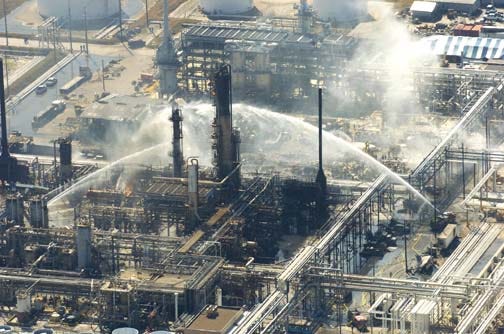Disasters that Built Process Safety: Texas City (2005)
This paid post is the sixth in a series that describes disasters that led to the formation of the Process Safety Management (PSM) discipline.
On March 23, 2005, a massive explosion ripped through BP’s Texas City refinery in Texas, USA. The incident occurred during the startup of an isomerization (ISOM) unit, designed to boost octane in gasoline by processing light hydrocarbons.
The Series
The posts in this series are:
Flixborough (1974)
Bhopal (1984)
Seveso (1976)
Piper Alpha (1988)
Toulouse (2001)
Texas City Refinery (2005) (this one)
What Happened
Operators were restarting the Raffinate Column after maintenance. Due to poor level control and inadequate monitoring, the column was overfilled with liquid hydrocarbons. The reboiler continued heating the column, causing pressure and liquid levels to rise beyond safe operating limits.
The blowdown drum and stack, a decades-old system that vented hydrocarbons directly to the atmosphere rather than to a flare, was overwhelmed. Hydrocarbon liquid and vapor spewed from the stack and formed a large vapor cloud at ground level. Causes included poor procedural adherence and inadequate instrumentation.
Within minutes, the cloud found an ignition source — likely a truck engine left running nearby — and exploded. The blast killed 15 workers and injured over 170 more, many of whom were in temporary trailers sited close to the blowdown stack. Physical damage throughout the refinery was extensive.
Causes of the accident included overfilling and heating of the Raffinate Column due to poor procedural adherence and inadequate instrumentation, and a blowdown drum and vent stack that should have been replaced with a flare system.
Lessons Learned
Keep reading with a 7-day free trial
Subscribe to The Process Safety Report to keep reading this post and get 7 days of free access to the full post archives.


